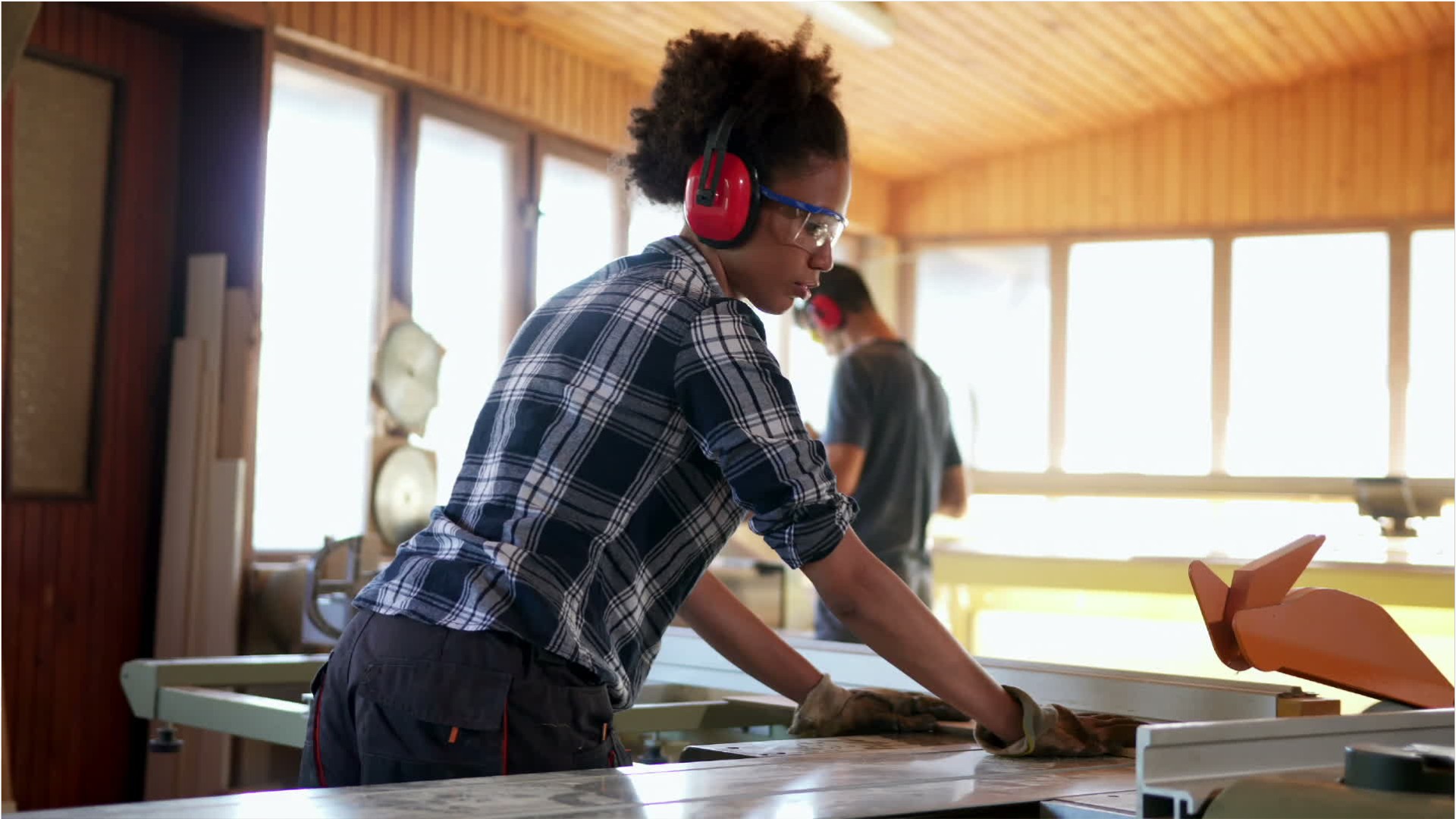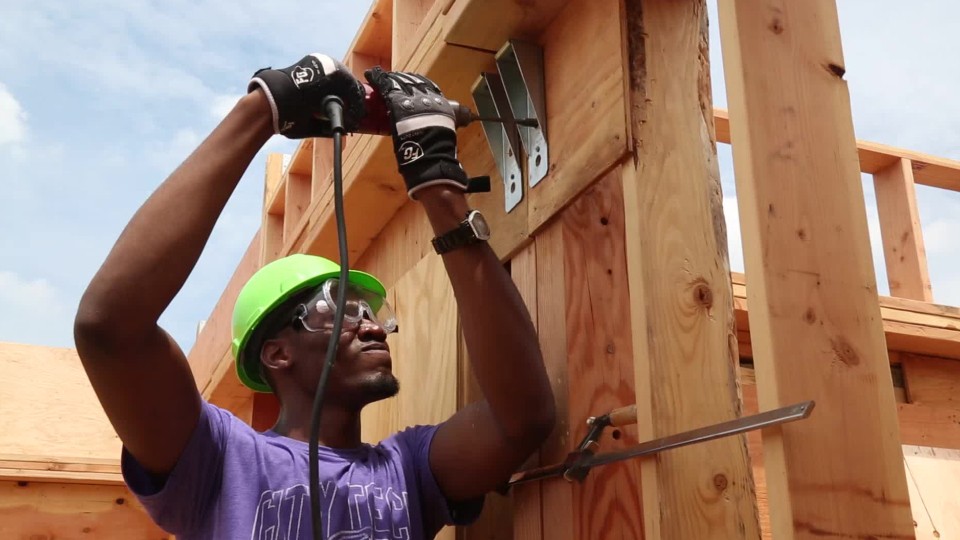Roofer
Roofer
Career Overview
Roofers use various roofing materials to install, repair or replace low or steep-sloped roofs on buildings. This work requires a lot of measuring and cutting of materials, and it may require replacing joists or plywood.
Education
A high school diploma or equivalent is usually required to obtain these positions. Most people learn this job through on-the-job training programs, which in some locations is a three-year long apprenticeship program.
Future Outlook
Employment of roofers is projected to grow 2 percent from 2019 to 2029, slower than the average for all occupations. Replacement and repair of roofs, as well as the installation of new roofs, will create demand for roofers.
Work Environment
Roofing work can be physically demanding because it involves heavy lifting, as well as climbing, bending, and kneeling, frequently in very hot weather. Roofers may work overtime in order to finish a particular job, especially during busier summer months.
Recommended High School Courses
- Math
- Trade-related courses
- Physical fitness
- Active Listening - Giving full attention to what other people are saying, taking time to understand the points being made, asking questions as appropriate, and not interrupting at inappropriate times.
- Coordination - Adjusting actions in relation to others' actions.
- Critical Thinking - Using logic and reasoning to identify the strengths and weaknesses of alternative solutions, conclusions or approaches to problems.
- Monitoring - Monitoring/Assessing performance of yourself, other individuals, or organizations to make improvements or take corrective action.
- Operation and Control - Controlling operations of equipment or systems.
- Operation Monitoring - Watching gauges, dials, or other indicators to make sure a machine is working properly.
- Speaking - Talking to others to convey information effectively.
- Time Management - Managing one's own time and the time of others.
- Administration and Management - Knowledge of business and management principles involved in strategic planning, resource allocation, human resources modeling, leadership technique, production methods, and coordination of people and resources.
- Building and Construction - Knowledge of materials, methods, and the tools involved in the construction or repair of houses, buildings, or other structures such as highways and roads.
- Customer and Personal Service - Knowledge of principles and processes for providing customer and personal services. This includes customer needs assessment, meeting quality standards for services, and evaluation of customer satisfaction.
- Design - Knowledge of design techniques, tools, and principles involved in production of precision technical plans, blueprints, drawings, and models.
- Education and Training - Knowledge of principles and methods for curriculum and training design, teaching and instruction for individuals and groups, and the measurement of training effects.
- English Language - Knowledge of the structure and content of the English language including the meaning and spelling of words, rules of composition, and grammar.
- Mathematics - Knowledge of arithmetic, algebra, geometry, calculus, statistics, and their applications.
- Mechanical - Knowledge of machines and tools, including their designs, uses, repair, and maintenance.
- Public Safety and Security - Knowledge of relevant equipment, policies, procedures, and strategies to promote effective local, state, or national security operations for the protection of people, data, property, and institutions.
- Arm-Hand Steadiness - The ability to keep your hand and arm steady while moving your arm or while holding your arm and hand in one position.
- Control Precision - The ability to quickly and repeatedly adjust the controls of a machine or a vehicle to exact positions.
- Deductive Reasoning - The ability to apply general rules to specific problems to produce answers that make sense.
- Extent Flexibility - The ability to bend, stretch, twist, or reach with your body, arms, and/or legs.
- Far Vision - The ability to see details at a distance.
- Finger Dexterity - The ability to make precisely coordinated movements of the fingers of one or both hands to grasp, manipulate, or assemble very small objects.
- Gross Body Coordination - The ability to coordinate the movement of your arms, legs, and torso together when the whole body is in motion.
- Gross Body Equilibrium - The ability to keep or regain your body balance or stay upright when in an unstable position.
- Inductive Reasoning - The ability to combine pieces of information to form general rules or conclusions (includes finding a relationship among seemingly unrelated events).
- Information Ordering - The ability to arrange things or actions in a certain order or pattern according to a specific rule or set of rules (e.g., patterns of numbers, letters, words, pictures, mathematical operations).
- Manual Dexterity - The ability to quickly move your hand, your hand together with your arm, or your two hands to grasp, manipulate, or assemble objects.
- Multilimb Coordination - The ability to coordinate two or more limbs (for example, two arms, two legs, or one leg and one arm) while sitting, standing, or lying down. It does not involve performing the activities while the whole body is in motion.
- Near Vision - The ability to see details at close range (within a few feet of the observer).
- Oral Comprehension - The ability to listen to and understand information and ideas presented through spoken words and sentences.
- Oral Expression - The ability to communicate information and ideas in speaking so others will understand.
- Problem Sensitivity - The ability to tell when something is wrong or is likely to go wrong. It does not involve solving the problem, only recognizing there is a problem.
- Selective Attention - The ability to concentrate on a task over a period of time without being distracted.
- Speech Recognition - The ability to identify and understand the speech of another person.
- Stamina - The ability to exert yourself physically over long periods of time without getting winded or out of breath.
- Static Strength - The ability to exert maximum muscle force to lift, push, pull, or carry objects.
- Trunk Strength - The ability to use your abdominal and lower back muscles to support part of the body repeatedly or continuously over time without 'giving out' or fatiguing.
- Visualization - The ability to imagine how something will look after it is moved around or when its parts are moved or rearranged.
- Inspect work sites to determine condition or necessary repairs.
- Remove debris or vegetation from work sites.
- Assemble temporary equipment or structures.
- Estimate construction project labor requirements.
- Estimate materials requirements for projects.
- Install roofing materials.
- Apply adhesives to construction materials.
- Cut carpet, vinyl or other flexible materials.
- Apply sealants or other protective coatings.
- Apply paint to surfaces.
- Install insulation in equipment or structures.
- Install solar energy systems.
- Smooth surfaces with abrasive materials or tools.
- Spread sand, dirt or other loose materials onto surfaces.
- Pour materials into or on designated areas.
- Install green structural components, equipment or systems.
- Install doors or windows.
- Drill holes in construction materials.
Related Careers
References
Trend Analysis - Explorer the Market, Labour Market Information, Government of Canada https://www.jobbank.gc.ca/trend-analysis.
O*NET OnLine, National Center for O*NET Development, https://www.onetonline.org/.



